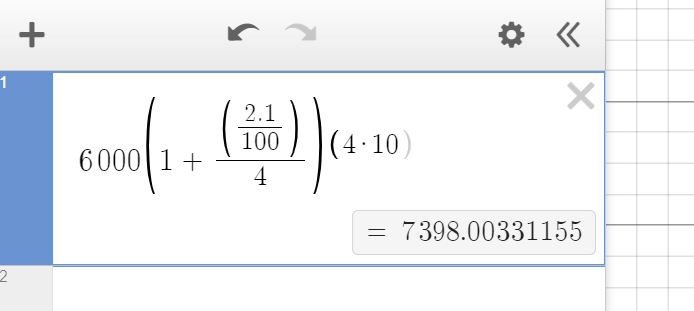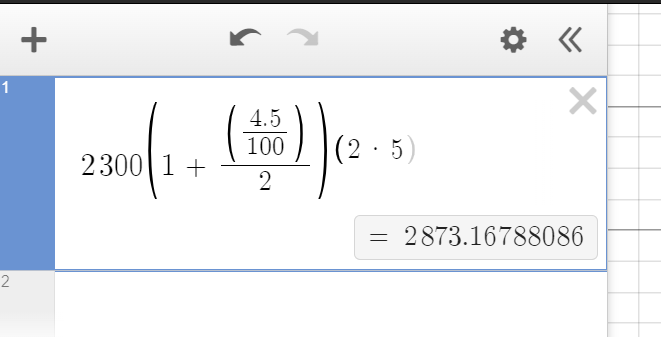
The formula for compound interest is:
Where:
Allie Allister of Alstown, PA invests $6000 in Allsbank. Allsbank offers an interest rate of 2.1% compouded quarterly. Allie leaves her money in Allsbank for 10 years without withdrawing any money. How much money does Allie have in Allsbank after 10 years?
To figure this out we first need to identify P, r, n, and t. They are:
We can then put them into our compound interest formula to find A, the total amount Allie has after 10 years:
Plugging this into Desmos we get:

We can round to the nearest penny to get:
Billy McBillerson of the Billington, PA invests $2300 into Bilsbank, which offers 4.5% interest compounded semi-annually. If Billy doesn't withdraw any money, how much total money does Billy have in Bilsbank after 5 years?
To solve this we need to identify P, n, r, and t, they are:
We can then write our equation for our total amount, A, as:
We'll then put this into Desmos to get our solution:

We can round our solution to: